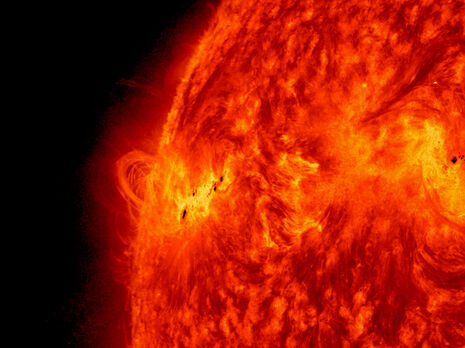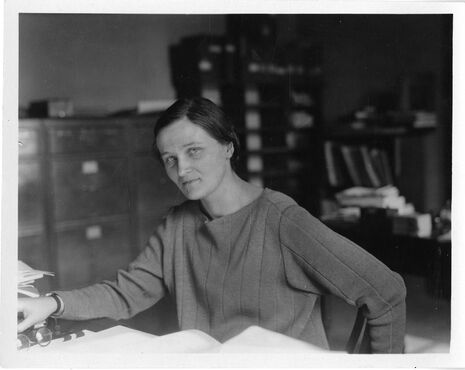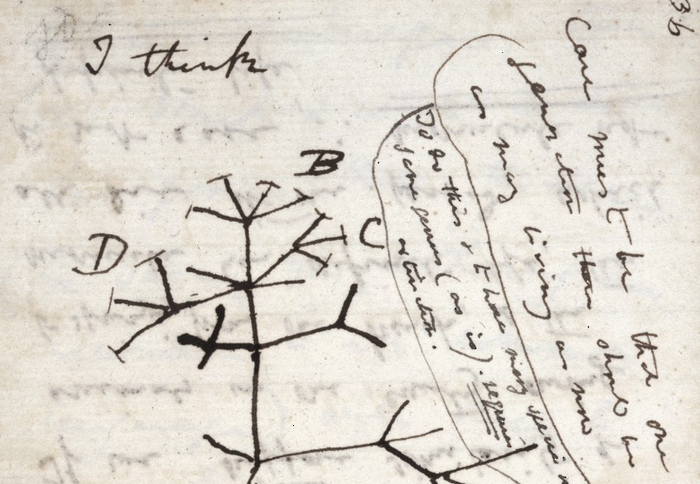Stars – both of the astronomical and human kind
Although initially dissuaded her conclusions, Cecilia Payne-Gaposchkin discovered that hydrogen is the most abundant element in stars, and therefore in the universe

In 1919, Cecilia Payne-Gaposchkin won a Cambridge University scholarship to study Natural Sciences at Newnham College. Less than ten years later, her PhD thesis on the chemical composition of stars was described by fellow scientists as “undoubtedly the most brilliant PhD thesis ever written in astronomy”.
Despite her later significant career in astronomy, Payne-Gaposchkin arrived in Cambridge intending to focus her studies on botany. However, she attended a lecture given by the director of the Cambridge Observatory, Sir Arthur Eddington, who had recently returned from the west coast of Africa where he had been making observations of stars close to the sun during the eclipse, providing experimental proof of Einstein’s new theory of general relativity. The lecture inspired in Payne-Gaposchkin what she later described as “a complete transformation of my world picture” and she then abandoned her studies in botany in favour of astronomy.
Neither Cambridge nor the UK provided any opportunities for women to pursue scientific careers at the time; the university did not award degrees to women until 1948. Graduating in 1923, Payne-Gaposchkin sought research opportunities in the United States and moved to Cambridge, Massachusetts to study for a PhD in astronomy at the Harvard College Observatory.

Since the 19th century, women had worked at the observatory as “computers”, carrying out the tedious job of categorising the light spectrum of each star as it was passed through a prism. For her PhD, Payne-Gaposchkin compared this spectral data with stellar temperatures. She discovered that, although carbon, silicon and some common metals were present in the Sun in the same abundances as on Earth, the most abundant element in the stars, and therefore in the universe, was hydrogen.
Payne-Gaposchkin used the ionisation equation developed by Indian astrophysicist Meghnad Saha to relate the temperatures of the stars to their spectral data. This allowed her to show that variations in the spectral absorption lines were due to differing amounts of ionisation at different stellar temperatures, as opposed to the composition of the star. From this she was able to work out the relative abundances of each element from the spectrum, establishing that large quantities of hydrogen and helium make up the majority of a star’s composition.
At the time this discovery was extremely controversial. Most scientists accepted the belief that the elements making up the Sun should be in the same ratios as those making up the Earth, with even Eddington believing iron to be the most abundant element in the Sun. Payne-Gaposchkin was dissuaded from making her conclusions and forced to write them off as anomalies in the data, until four years later when separate experiments derived the same result and her work was recognised.
Cecilia Payne-Gaposchkin was a trailblazer for women in science: her PhD marked a turning point in the career of women scientists, who went from being thoughtless “computers” to researchers making major contributions to scientific understanding.
 News / CUP announces funding scheme for under-represented academics19 December 2025
News / CUP announces funding scheme for under-represented academics19 December 2025 News / Cambridge welcomes UK rejoining the Erasmus scheme20 December 2025
News / Cambridge welcomes UK rejoining the Erasmus scheme20 December 2025 Comment / Yes, I’m brown – but I have more important things to say22 December 2025
Comment / Yes, I’m brown – but I have more important things to say22 December 2025 News / SU reluctantly registers controversial women’s soc18 December 2025
News / SU reluctantly registers controversial women’s soc18 December 2025 Film & TV / Timothée Chalamet and the era-fication of film marketing21 December 2025
Film & TV / Timothée Chalamet and the era-fication of film marketing21 December 2025









